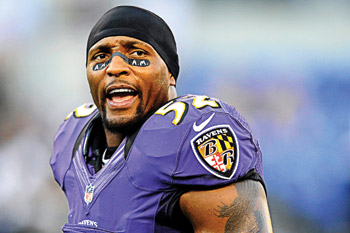Gullibility, Truth And Deer Antlers
It’s like we need someone to blame for our own gullibility.
When it comes to anyone in the public eye, but most notably athletes and politicians, we often fail to recognize simple humanity and instead project unsustainable standards upon regular people.
It’s been happening for a while, but there has been a recent rash of tearing down and admonishing previously revered athletes whom we — media and fans alike — had built up as heroes.
Sometimes it seems warranted, as when Lance Armstrong admitted to doping throughout his entire historic and heroic run to seven Tour de France titles.
Had he not been so brazen in his denials and taken out a vendetta against anyone who spoke up against him, the backlash may not have been so brutal.
And it probably would have been even more brutal if the Manti Te’o story hadn’t broken the same week, which was another tearing down of an athlete under much different circumstances.
Now, just days before the Super Bowl, his last game before retirement, Baltimore Ravens line-backer Ray Lewis was in the news for having allegedly taken a banned substance to recover from the torn triceps he suffered Oct. 14, 2012. A torn triceps is usually a season-ending injury, and the initial reports indicated the same would be true for Lewis. But, as you probably know well, it did not end his season and he was back to help the Ravens make a surprise run to the Super Bowl.
The substance in question is a spray that comes from deer antlers called IGF-1. It is banned by the NFL and other organizations, but they do not test for it.
Personally, I don’t think you should take anything specifically designated as a banned substance, but I’m not going to comment on whether or not I think it’s right or wrong — in general — for a player to seek out and take something to increase performance, because these things often look different over the course of time.
Is taking something to help recovery really any different than getting laser surgery to improve eyesight?
I have a feeling that someday in the not too distant future, something like human growth hormone will be much more mainstream and a standard recovery or training substance, so labeling it evil right now seems silly — but not as silly as anything involving deer antlers.
Prior to Lewis and Armstrong, basically every baseball player of the past 20 years received the wag of the finger. When it came time to choose this year’s Baseball Hall of Fame inductees Jan. 9, the writers threw back their shoulders, pointed their noses up and collectively said, “None shall pass!” Indeed, not one eligible player made it to the hall.
For me, the Baseball Hall of Fame should never be taken seriously again. It isn’t because I have a major problem with people such as Roger Clemens, Barry Bonds or Rafael Palmeiro being left out, since they have serious and real ties to performance-enhancing substances and steroids.
It’s because the writers also held out guys like Craig Biggio and Mike Piazza, who don’t have any of those ties but played during this same era of shame — an era apparently more shameful than segregation.
No, Babe Ruth and Lou Gehrig didn’t have access to HGH, but they also played during a time of “whites only.”
As some sort of grandiose statement of self-worth and faux sentimentality, the voters felt compelled to put these steroid-era guys in their place — the same guys they initially built up by turning a blind eye to the obvious practices of the day.
So what’s the end game here?
Will the Hall of Fame not include Bonds, the all-time home run king?
Cooperstown will look like a redacted government-released document that has black marker over anything of importance.
Just like the government, pro sports leagues are comprised of human beings. If we hold them to a standard of perfection, we’re just asking to be lied to.
We shouldn’t feel so blindsided and offended when they oblige.




